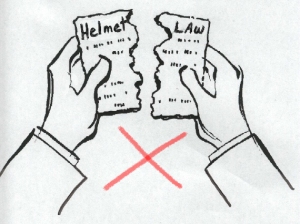There are many other helmet campaigns that helped to push the safety for all people. Wearing a helmet is a simple action, in return it protects the most important part of human body. Below is a list of existing helmet campaigns: (it is evident that wearing a bicycle helmet successfully decrease the risk of head injury, as the campaigns emerged in different parts of the world)
- Helmet.org. This website provides a lot of information regarding to helmet. Whether you have a question about helmet, going on this site is the best choice to look for your answer. The site also included statistics from various researches that proved how effect helmets are protecting us.
- Headway. Headway continues its efforts to promote the use of cycle helmets, and campaigns to make it compulsory for children under the age of 16 to wear helmets while cycling. From contact with our Groups and Branches across the UK, we know that this is an ongoing issue that affects a large number of our service users and their families. By encouraging cyclists to wear helmets we are fulfilling one of our crucial aims – to help reduce the prevalence of brain injury in society.
- Above All, Wear a Helmet. Even though this campaign is aimed for motorcyclists, the same concept applies of wearing a bicycle helmet. The campaign aims to improve the safety of drivers and passengers of motorbikes and scooters and advocates the compulsory wearing of helmets for all journeys.
- No Excuse, Wear a Helmet. The campaign features three images which appear on two dozen posters throughout the city in high bike-traffic areas. In two images, bikers not wearing helmets have sustained injuries from a crash. In the third, a female biker was protected by her helmet.



- No Helmet, No Ride competition is designed to provide an interactive way for children to learn about the importance of always wearing a helmet when riding a wheeled device. In 2014 the competition called on primary school students to create a video, radio ad or illustrated story around the theme ‘No Helmet, No Ride’.
These are all some fascinating and inspiring campaigns!
Be sure to wear a helmet at all time, a life saver is within your action.Lin


















